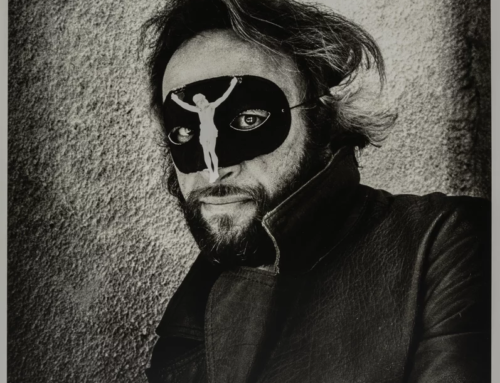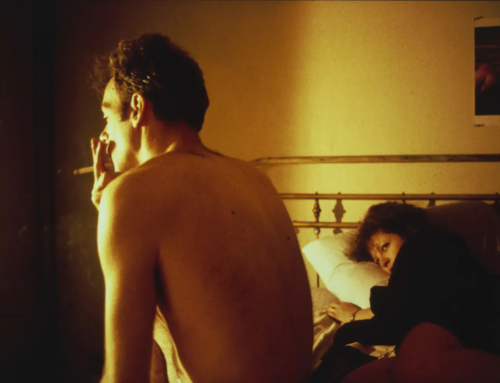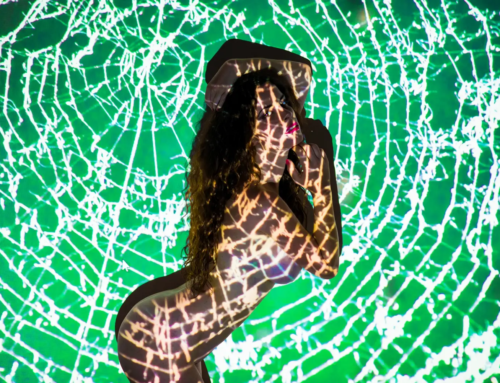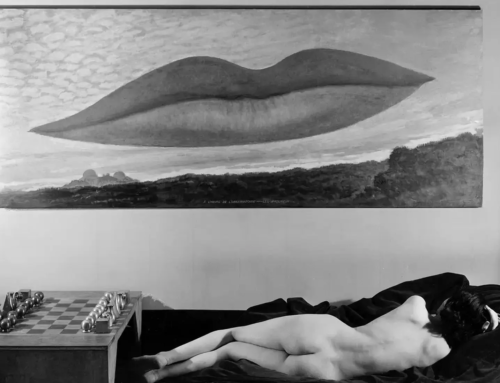The Glossy Revolution: How Fashion and Glamour Shaped Nude Photography (1950s-1970s)
The period between the 1950s and 1970s was driven by a new, powerful force: consumer culture. The post-war economic boom in the West gave rise to mass-market magazines like Vogue, Harper’s Bazaar, and the newly launched Playboy, which wielded unprecedented influence. With huge budgets and vast audiences, these publications became the new patrons of photography, commissioning artists to create images that were not just beautiful but also provocative, aspirational, and, above all, desirable. This dynamic environment caused the lines between fashion, glamour, and fine art to dissolve completely, creating a bold, commercially charged, and unapologetically sexual style of fashion nude photography that defined an era and continues to influence us today.
The Cultural Context: A World in Flux
This photographic revolution did not happen in a vacuum. It was a direct product of immense social change. The post-war prosperity created a new middle class with disposable income, fueling a desire for luxury and glamour. The development of the birth control pill in the 1960s was a catalyst for the sexual revolution, decoupling sex from procreation in the popular imagination for the first time. This seismic shift challenged traditional mores and created an appetite for a more open and honest discussion of sexuality, a niche that these photographers and magazines were perfectly positioned to fill. Their work was both a reflection of and a catalyst for the changing times.
Helmut Newton (1920-2004): The Master of “Porno Chic”
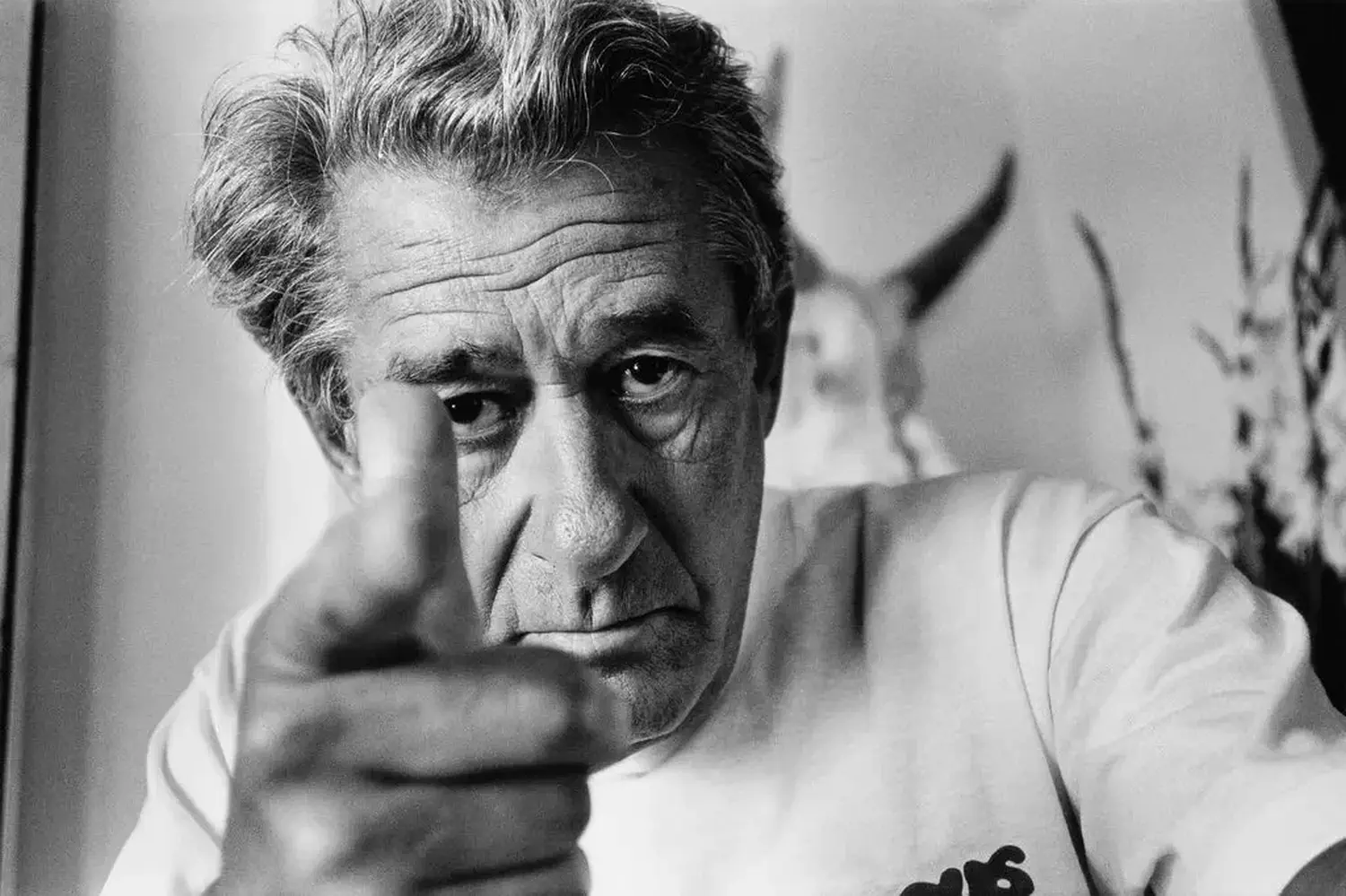
Helmut Newton
No photographer better embodies this era than Helmut Newton. His work was a masterclass in blending high fashion with daring, erotically charged, and often unsettling narratives. His women were never passive objects of desire; they were powerful, intimidating, Amazonian figures who were unapologetically in control, often depicted in luxurious, cinematic settings. The term “porno chic” was coined to describe his aesthetic, which borrowed the frankness of pornography but elevated it with the budgets, styling, and artifice of high fashion.
The Newtonian Woman: Power, Androgyny, and Voyeurism
Newton’s famous diptych, “Sie Kommen” (They Are Coming, 1981), is a perfect distillation of his philosophy. It directly confronts the relationship between fashion, power, and the body by showing four models walking forward, first fully clothed in power suits, then completely nude. The statement is clear: for Newton’s women, clothing and nudity are both uniforms of power. Similarly, his “Big Nudes” series, inspired by the stark aesthetic of German police forensic photographs, presents the female form as monumental and confrontational, transforming the model into a towering icon who stares down the viewer.
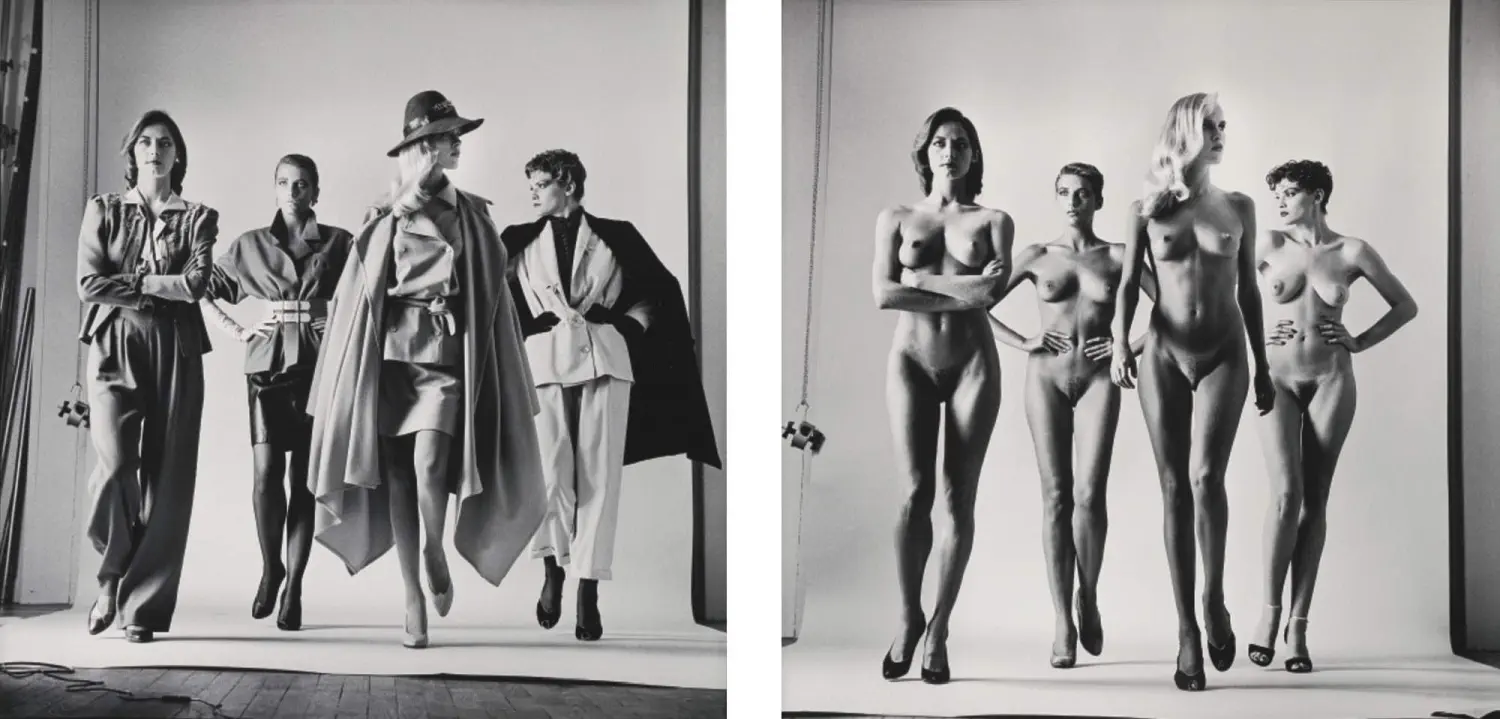
“Sie Kommen” by Helmut Newton
Richard Avedon (1923-2004): The Minimalist Gaze
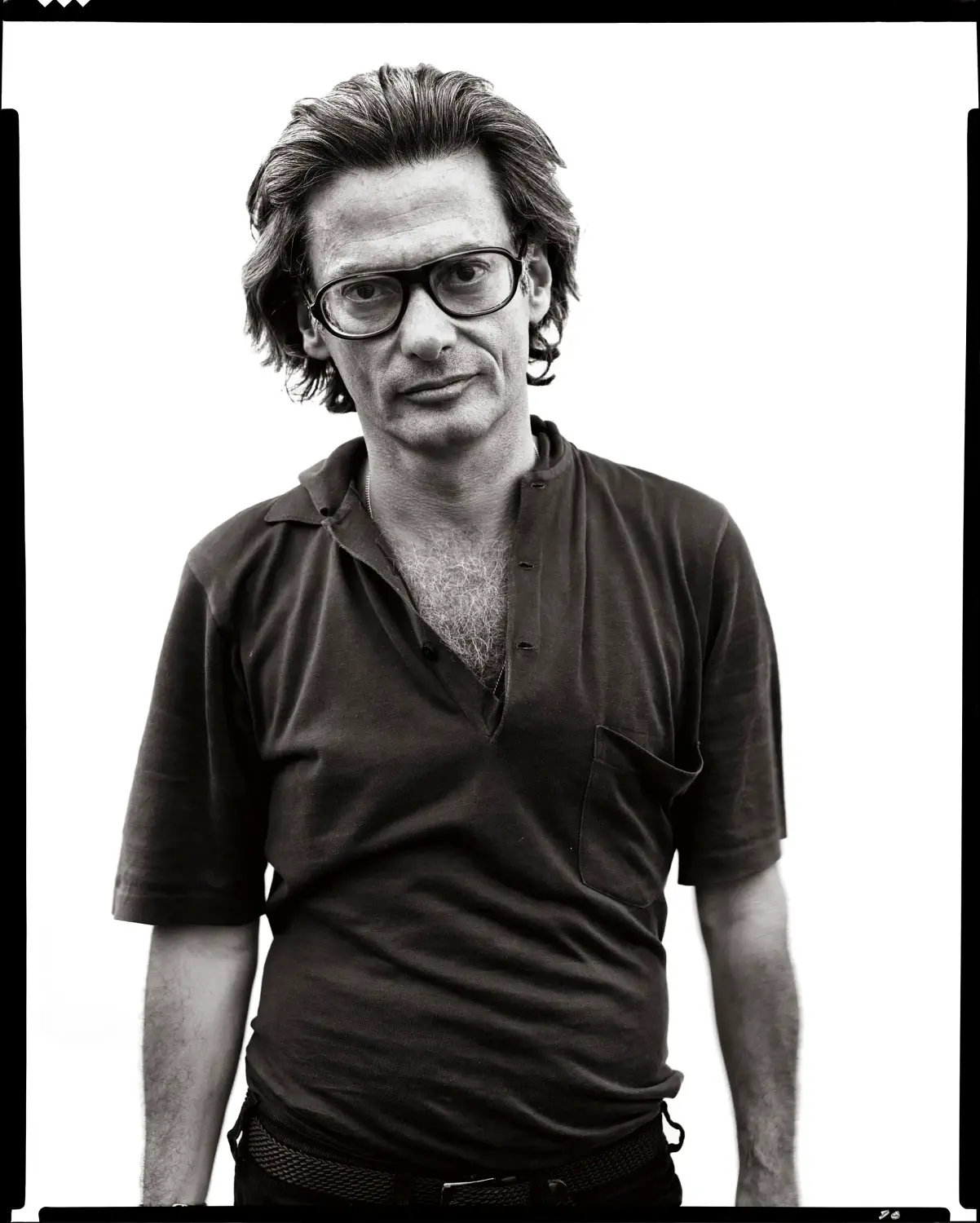
Richard Avedon
While Newton built cinematic worlds, Richard Avedon stripped them away. Primarily a fashion and portrait photographer, Avedon brought a minimalist power to the nude. Using his signature stark white background, he removed all context, forcing a direct and intimate confrontation between the viewer and the subject. His nudes are less about eroticism and more about revealing the vulnerability, individuality, and essential character of the person before his lens.
The Studio as Laboratory: Character Over Context
Avedon’s white background functioned as a psychological canvas. By isolating his subjects from any environment, he believed he could capture a deeper truth about their character. His iconic 1981 photograph, “Nastassja Kinski and the Serpent,” perfectly demonstrates this. The coiled snake mirrors and accentuates the curves of Kinski’s body, creating a potent symbol of temptation, danger, and primal beauty. It is a testament to Avedon’s genius that he could create such a rich, mythological narrative using only a body, a prop, and a blank wall.

“Nastassja Kinski and the Serpent” by Richard Avedon
Sam Haskins (1926-2009): The Graphic Innovator
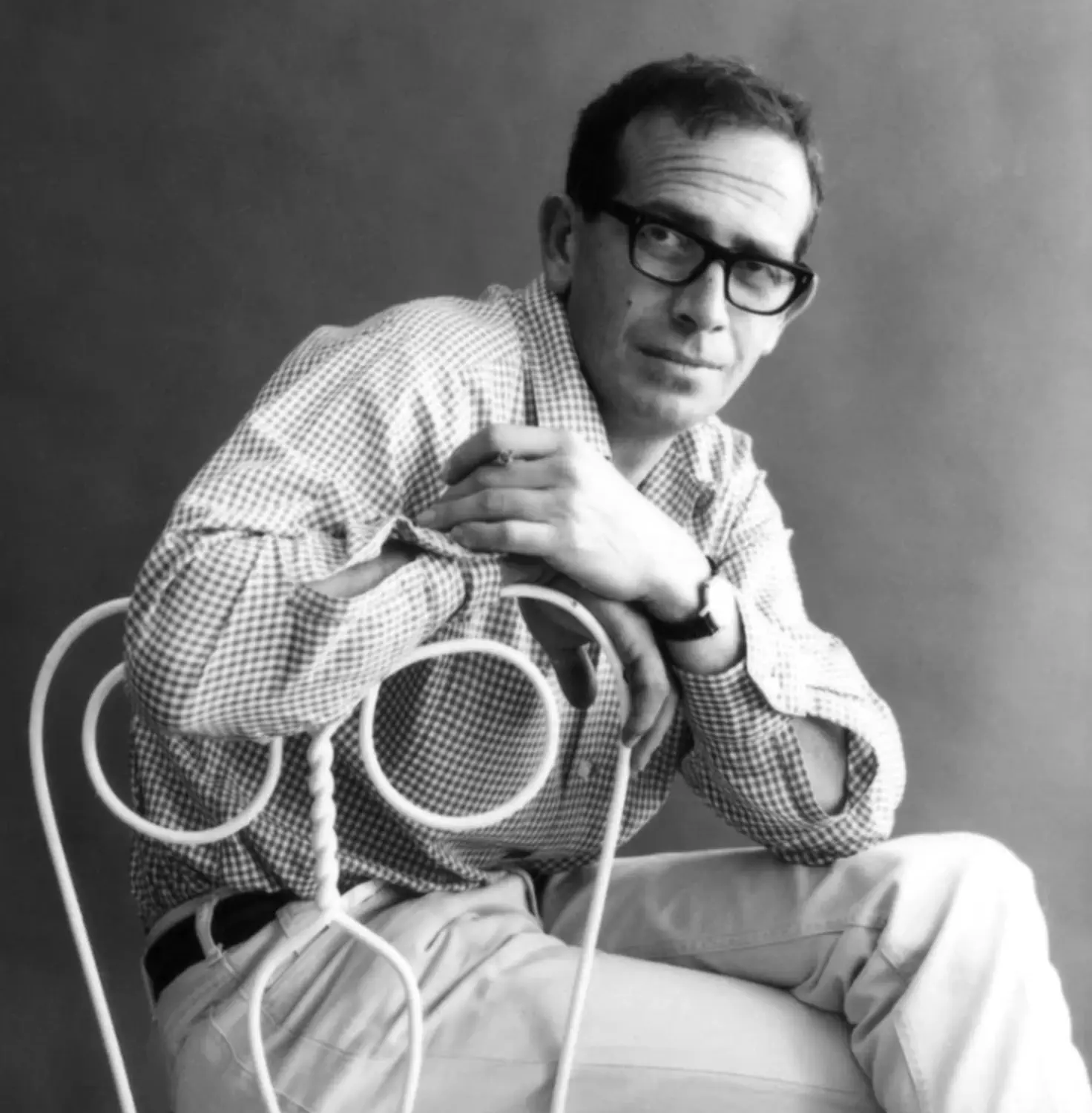
Sam Haskins
Sam Haskins brought a playful, graphic, and deeply innovative sensibility to the nude. Where Newton was cinematic and Avedon was minimalist, Haskins was a storyteller. His groundbreaking photo books were not just collections of images but narrative photo-novels. He used high-contrast printing, creative cropping, grain, and multiple exposures to create a dynamic and fresh visual style that was a world away from traditional, static nudes.
Beyond the Single Image: The Rise of the Photo-Novel
His celebrated book “Cowboy Kate & Other Stories” (1964) was a pioneering work of sequential visual storytelling that influenced fashion editorials for decades. The image from “November Girl” below, with its playful use of an apple, is characteristic of Haskins’s approach: sensual and beautiful, but also witty, charming, and full of a joyful, liberated spirit that perfectly captured the optimism of the 1960s.

From “Cowboy Kate & Other Stories” by Sam Haskins

From “November Girl” by Sam Haskins
Chroniclers of an Era: Other Influential Figures
Alongside the major architects, a host of other talented photographers captured and defined the spirit of the age.
Jeanloup Sieff (1933-2000): The Elegant Gaze
Jeanloup Sieff was known for his elegant, often whimsical, and distinctly European approach. He frequently used wide-angle lenses to elongate and distort the human form, creating graceful and dramatic compositions that played with deep shadows and stark highlights. His powerful and controversial 1971 nude portrait of the fashion designer Yves Saint-Laurent for his own perfume campaign was a landmark moment, challenging gender norms and perfectly merging the worlds of high fashion, celebrity, and fine art.
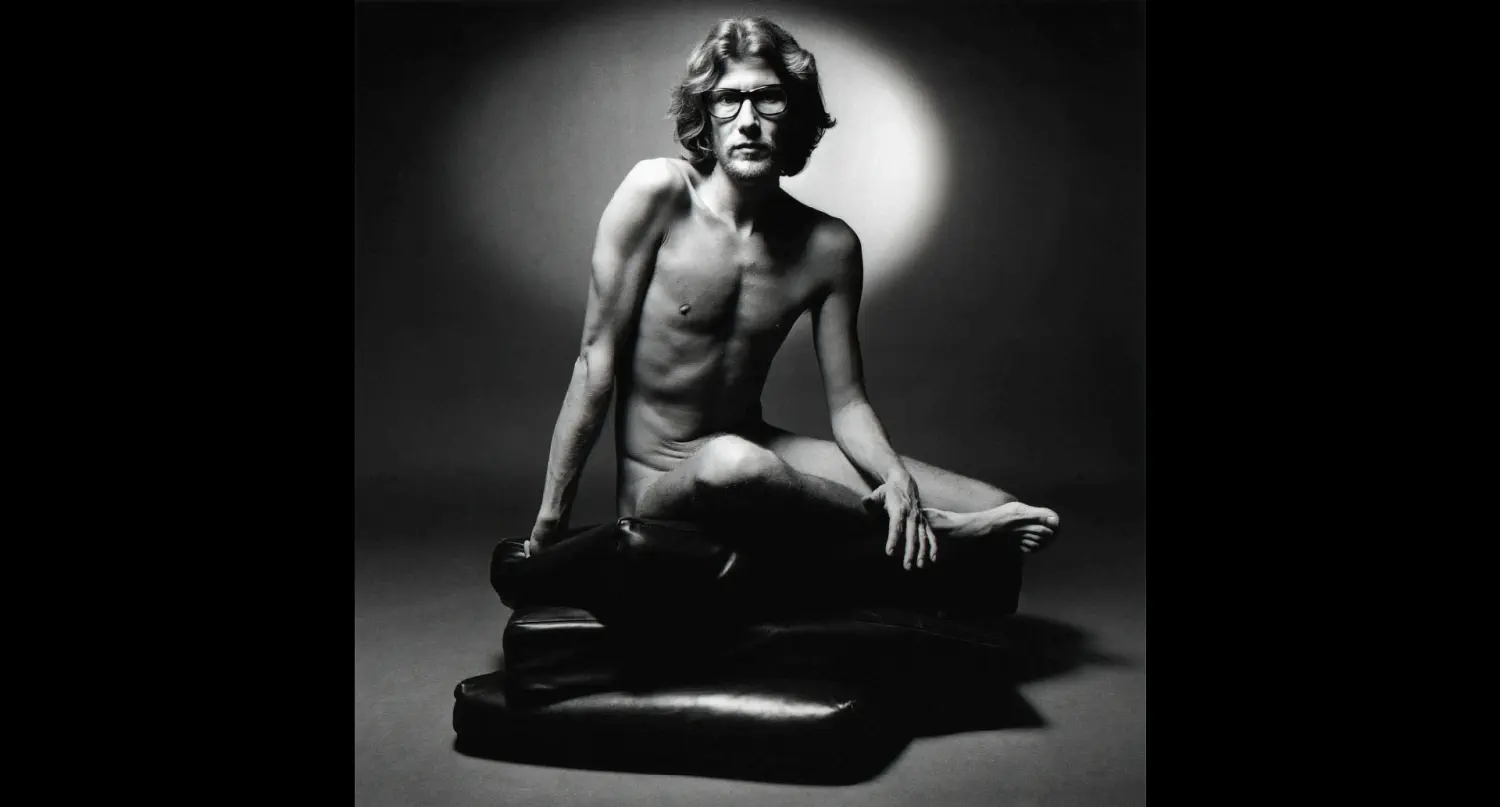
Yves Saint-Laurent by Jeanloup Sieff
Guy Bourdin (1928-1991): Surrealism, Fetish, and Fatalism
A protégé of Man Ray, Guy Bourdin brought a surrealist, provocative, and often unsettling vision to his fashion work for French *Vogue* and Charles Jourdan shoes. He created complex, mysterious, and richly colored narratives in which the human form—nude or clothed—was often just one element in a bizarre and sometimes sinister story. His work explored fetishistic imagery, often focusing on legs and shoes, and was filled with a sense of impending drama or unseen danger, pushing commercial photography into the realm of psychological thriller.

Guy Bourdin
Bert Stern (1929-2013): The Last Sitting
Bert Stern’s legendary photoshoot with Marilyn Monroe, taken for *Vogue* just six weeks before her death, has become a cultural touchstone. “The Last Sitting” features a series of intimate clothed and nude portraits that capture a raw vulnerability. The famous image of Monroe with a semi-transparent scarf reveals a fragility and weariness that is deeply poignant, forever shaping the public’s memory of the iconic star as a beautiful but tragic figure.

From “The Last Sitting” by Bert Stern
Capturing the ‘Swinging Sixties’: David Bailey and Peter Knapp
David Bailey (1938-) was a central figure of “Swinging London,” bringing a direct, energetic, and anti-establishment feel to fashion photography. His work captured the free-spirited attitude of the decade. As artistic director for *Elle* magazine, Peter Knapp (1931-) brought a revolutionary, modern, and graphic sensibility to fashion. His dynamic covers, like the one below, emphasized movement, bold color, and typography, influencing how the body was presented in both fashion and fine art contexts.

Cover for *Elle* by Peter Knapp
Conclusion: The Permanent Merging of Art and Commerce
The photographers of this era did more than just take pictures; they shaped culture. By placing provocative, artistic nudes in mainstream magazines, they both reflected and fueled the sexual revolution, making confrontational and sexually liberated imagery a part of everyday life. Their lasting impact was the definitive and permanent blurring of the lines between art and commerce. They proved that desire was marketable and that the nude body could be the ultimate tool in advertising and media. This bold, unapologetic approach to sexuality and the human form created a new visual language that set the stage for the feminist critiques and identity politics of the following decades, and continues to dominate fashion and art today.
The Artist’s Perspective: The influence of this era can be seen in the work of contemporary artists who continue to explore the intersection of fashion and fine art. For collectors and enthusiasts, limited edition works by award-winning nude art photographer Burak Bulut Yıldırım are available on respected platforms like Saatchi Art and Artsper. You can explore his full portfolio of contemporary projects at burakbulut.org.
For over a decade, Yıldırım has also shared his expertise through nude art photography workshops in Berlin. These workshops offer photographers the opportunity to draw inspiration from the great innovators of the 1950s-1970s while developing their own unique style. To learn more about upcoming workshops or to discuss collaborations, connect with us on Instagram or email hello@nudeartworkshops.com.

